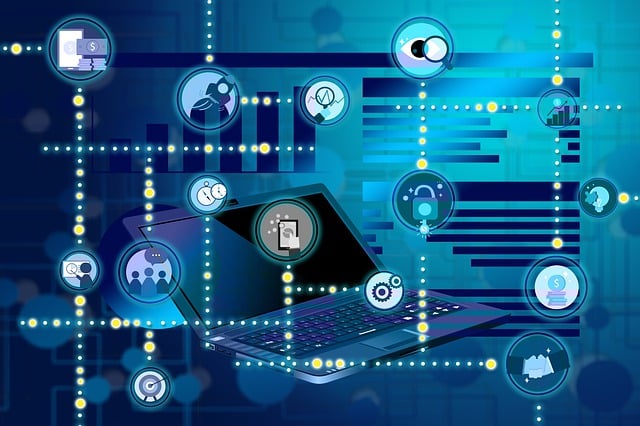AI-powered "ghost kitchens" revolutionize dining by eliminating physical spaces and leveraging technology for menu design, customer interactions, kitchen management, and delivery logistics. AI virtual restaurant brand testing engines are key tools for simulating scenarios, optimizing business models, and predicting customer tastes before launch. These innovations offer cost savings, enhanced efficiency, data-driven personalization, and improved operational insights through automated tasks like ingredient sourcing and inventory control. Testing engines facilitate scalability, consistency, adaptability, and swift iterations without the need for physical kitchens, driving growth in a competitive market.
“The future of dining is here with AI-powered ghost kitchens revolutionizing the food industry. This innovative concept, shrouded in technology, offers unprecedented efficiency and benefits for both restaurants and customers.
In this article, we explore how artificial intelligence (AI) transforms kitchen workflows, from automation tools enhancing operations to the untapped potential of testing engines for virtual restaurant brands. Discover how these technologies ensure scalability and consistent quality, marking a new era in culinary experiences.”
- Understanding AI-Powered Ghost Kitchens and Their Benefits
- Automating Workflows: Tools and Technologies for Efficient Kitchen Operations
- Testing Engines: Unlocking Scalability and Consistency in Virtual Restaurant Brands
Understanding AI-Powered Ghost Kitchens and Their Benefits

AI-powered ghost kitchens, also known as cloud or virtual restaurants, are innovative concepts that leverage artificial intelligence and automation to streamline dining experiences. These digital eateries operate without physical storefronts, utilizing technology to manage everything from menu design and customer interactions to kitchen operations and delivery logistics. AI virtual restaurant brand testing engines play a pivotal role in this process, enabling entrepreneurs to simulate various scenarios and optimize their business models before launching.
The benefits of AI ghost kitchens are multifaceted. They offer cost-effectiveness by eliminating the need for rent, utilities, and physical maintenance, making them an attractive option for startups and existing restaurants looking to expand. Moreover, automation enhances efficiency, allowing multiple orders to be processed simultaneously, reducing wait times, and improving overall customer satisfaction. By leveraging data-driven insights, these virtual kitchens can tailor menus to local preferences, ensuring relevant offerings that attract a wider customer base.
Automating Workflows: Tools and Technologies for Efficient Kitchen Operations

In the realm of AI-powered ghost kitchens, workflow automation is revolutionizing kitchen operations for virtual restaurant brands. Tools and technologies designed to streamline processes from order intake to dish preparation are becoming game changers in this rapidly growing sector. AI virtual restaurant brand testing engines, for instance, leverage machine learning algorithms to predict customer preferences, optimize menu design, and enhance overall dining experiences. These innovative solutions enable efficient kitchen management by automating tasks such as ingredient procurement, inventory control, and staffing allocation.
By integrating advanced technologies, ghost kitchens can achieve unparalleled efficiency and accuracy in handling a high volume of orders. Automated systems ensure that dishes are prepared promptly, reducing wait times for customers and increasing revenue potential. Moreover, these tools provide valuable insights into kitchen performance metrics, allowing brands to make data-driven decisions, continually refine their operations, and ultimately deliver superior service to their clientele.
Testing Engines: Unlocking Scalability and Consistency in Virtual Restaurant Brands

Testing Engines play a pivotal role in the rise of AI-powered virtual restaurant brands, enabling them to achieve unprecedented scalability and consistency. These innovative tools simulate real-world scenarios, allowing developers to refine algorithms and models within a controlled environment. By feeding vast amounts of data into these engines, each representing diverse customer interactions and order complexities, restaurants can ensure their AI systems are robust enough to handle any demand surge or menu variation.
Moreover, Testing Engines provide an opportunity for rigorous testing without the overhead of managing physical kitchens. This means virtual brands can quickly iterate and adapt, ensuring their AI ghost kitchen workflow automation remains at the forefront of the industry. As a result, they can offer consistent quality, faster delivery times, and personalized experiences to their customers, ultimately driving growth in this competitive market.
AI-powered ghost kitchens are revolutionizing the culinary landscape, offering enhanced efficiency and scalability. By automating workflows with advanced tools and technologies, these kitchens ensure consistent quality across various virtual restaurant brands. Testing engines play a pivotal role in this process, enabling businesses to streamline operations, reduce costs, and deliver exceptional customer experiences, ultimately solidifying their position in the competitive food industry.
